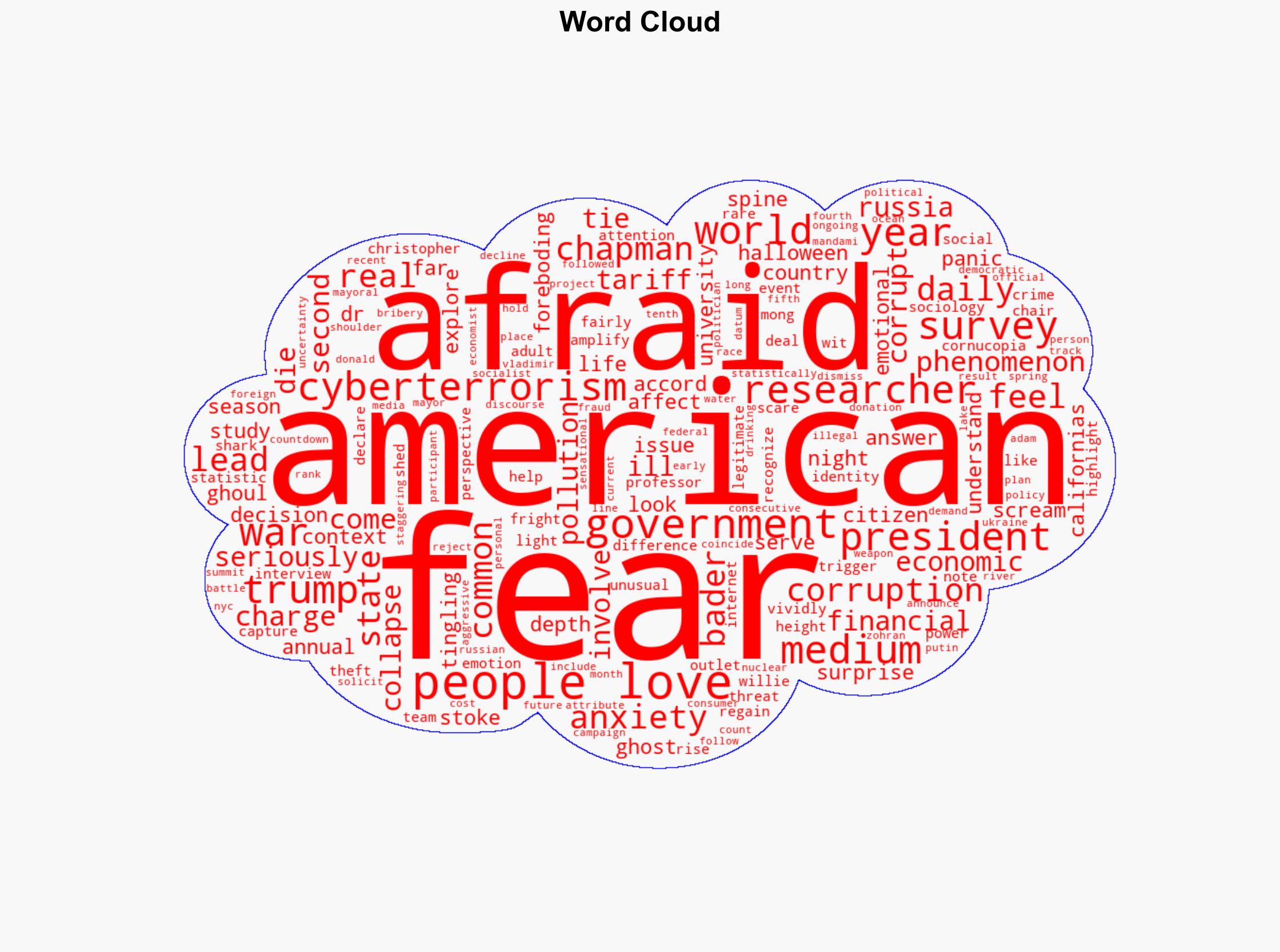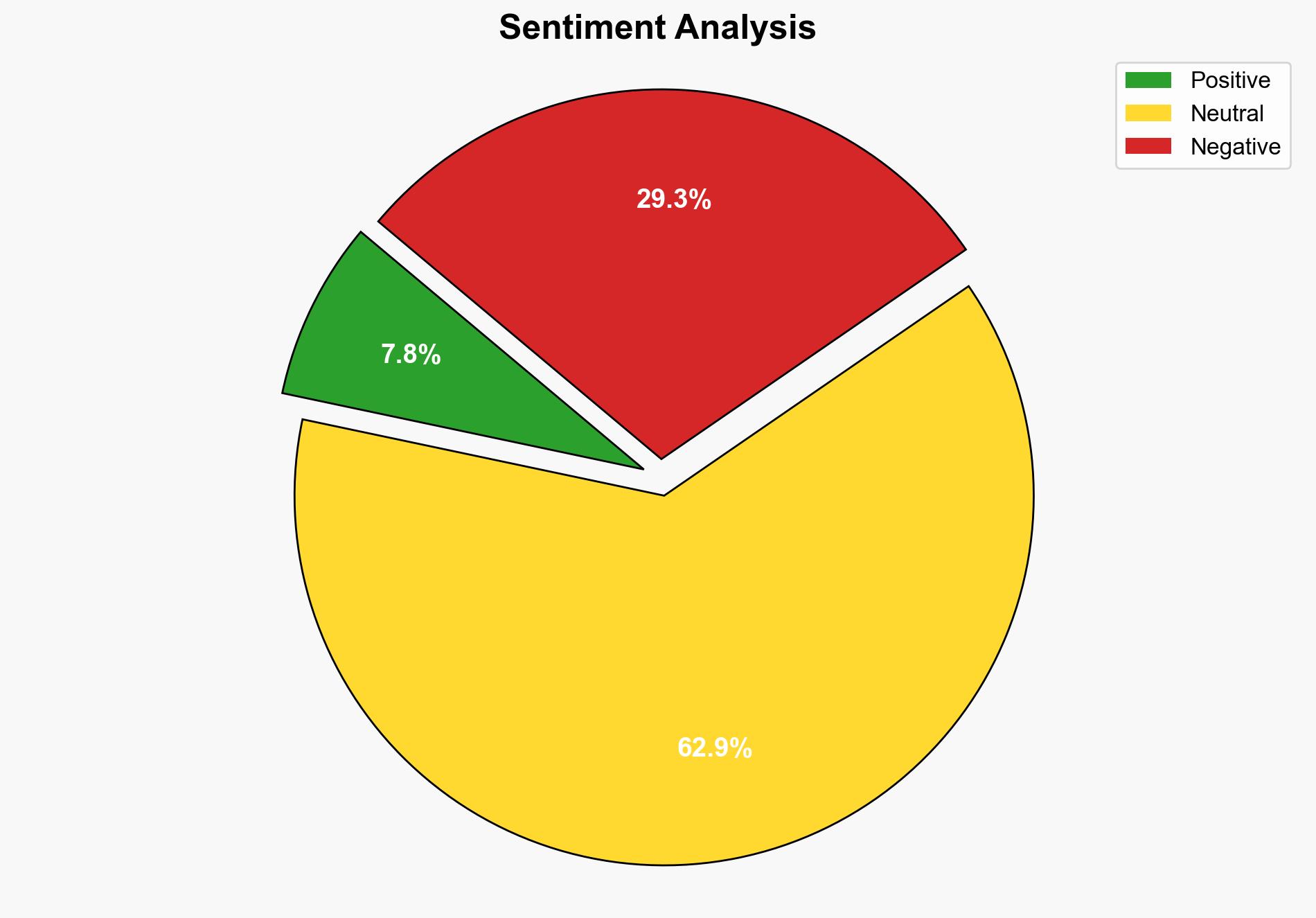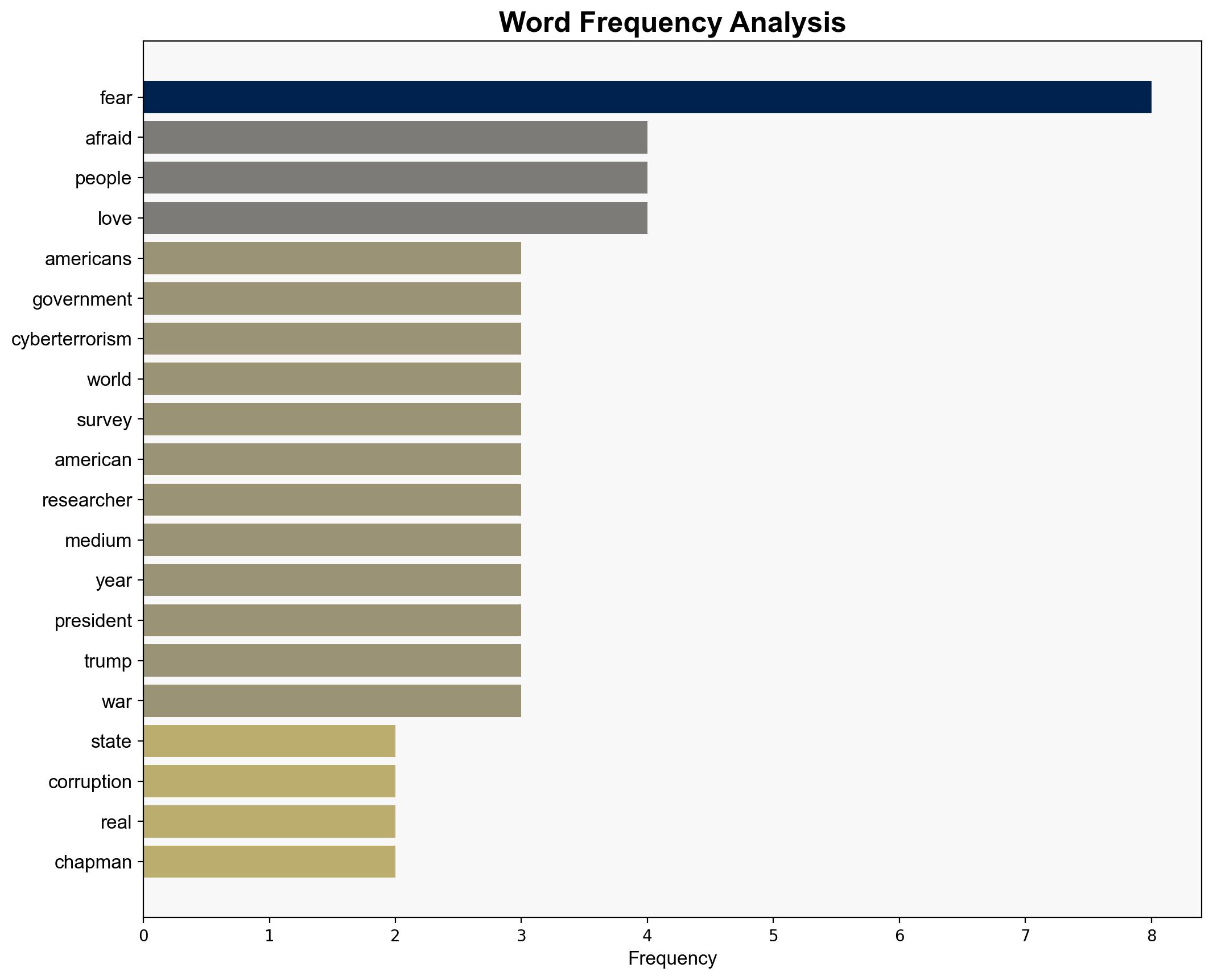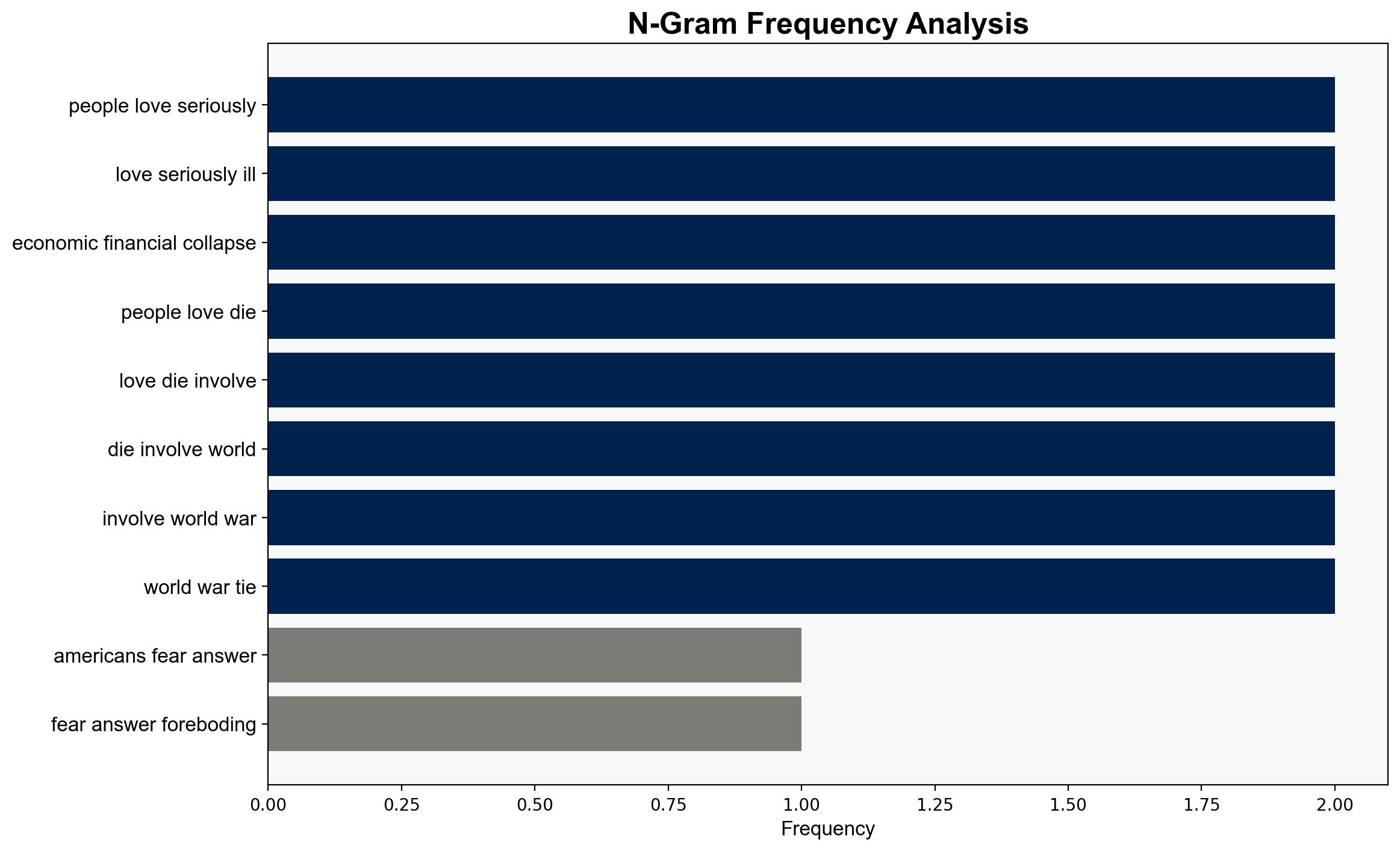What do Americans fear most The answers to this foreboding study might surprise you – New York Post
Published on: 2025-10-24
Intelligence Report: What do Americans fear most The answers to this foreboding study might surprise you – New York Post
1. BLUF (Bottom Line Up Front)
The analysis suggests that Americans’ fears are primarily driven by perceived threats from government corruption and cyberterrorism, with a high confidence level in the data supporting these concerns. The most supported hypothesis is that media amplification and political discourse significantly influence these fears. Recommended action includes enhancing public awareness and resilience against media sensationalism and misinformation.
2. Competing Hypotheses
1. **Hypothesis A**: Americans’ fears are primarily driven by actual increases in threats such as government corruption and cyberterrorism, reflecting genuine risk perceptions.
2. **Hypothesis B**: Americans’ fears are largely amplified by media sensationalism and political discourse, which exaggerate the perception of threats beyond their actual risk levels.
Using structured analytic techniques like ACH 2.0, Hypothesis B is better supported. The data indicates a disconnect between actual crime statistics and perceived threats, suggesting media influence as a significant factor.
3. Key Assumptions and Red Flags
– **Assumptions**: It is assumed that survey responses accurately reflect public sentiment and that media influence is a primary driver of fear.
– **Red Flags**: Potential bias in survey methodology and the influence of recent political events on respondents’ perceptions. The dismissal of charges against Mayor Adams could skew perceptions of government corruption.
– **Blind Spots**: Lack of granular data on demographic variations in fear perceptions and the role of social media algorithms in amplifying fears.
4. Implications and Strategic Risks
The amplification of fears through media and political discourse can lead to increased public distrust in government and institutions, potentially destabilizing social cohesion. Economic and cyber threats remain significant, with potential for escalation if not addressed through policy and public education.
5. Recommendations and Outlook
- Enhance public education campaigns to improve media literacy and critical thinking skills.
- Strengthen cybersecurity measures and transparency in government operations to address genuine concerns.
- Scenario Projections:
- **Best Case**: Improved public resilience and trust in institutions through effective communication strategies.
- **Worst Case**: Escalation of public fear leading to increased polarization and social unrest.
- **Most Likely**: Continued media influence on public perceptions with gradual improvements through targeted interventions.
6. Key Individuals and Entities
– Christopher Bader: Lead researcher of the study.
– Zohran Mamdani: Mentioned in the context of NYC mayoral race.
– Mayor Adams: Subject of dismissed corruption charges.
– Donald Trump: Mentioned in relation to tariff policies and geopolitical tensions.
7. Thematic Tags
national security threats, cybersecurity, counter-terrorism, regional focus




